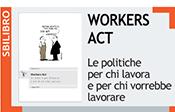Ultimi link in questa sezione
Real Wages In The Eurozone: Not A Double But A Continuing Dip
In the Global Wage Report issued at the end of last year, the ILO observed that real wages in developed economies had suffered a double dip by falling in 2008 and again in 2011.
In the Euro Area, real wage trends are different but at the same time also more problematic. According to the Commission’s recently released spring forecasts, the growth rate of Euro Area nominal wages took a firm dive below of 2% already from 2009 on. This resulted in a fall of 0.3% in real wages in 2011 and another -0.3% fall in 2012. In 2013 and 2014, the European Commission expects real wages to stay close to stagnation (0.2%).
These are average figures for the Euro Area. Behind these averages is hiding the fact that real wages have fallen quite significantly in a number of member states. In 2012 for example, Greece and Portugal registered a fall of around 5%, whereas real wages are falling by around 2% in Spain and Italy.
Moreover, these falls in real wages add up, year after year. In Greece and Spain real wages have now fallen for five consecutive years. In Italy and Ireland real wages will have been going down over a period of four years. If we start counting from 2009 on and until 2014, real wages per worker will have gone down by 22% in Greece, 7% in Spain and Portugal, 5% in Ireland and 2 to 3% in Austria, the Netherlands and Italy (see graph). In fact, real wage increases in the Euro Area over these past years have been limited to just two countries: Germany and Finland.










